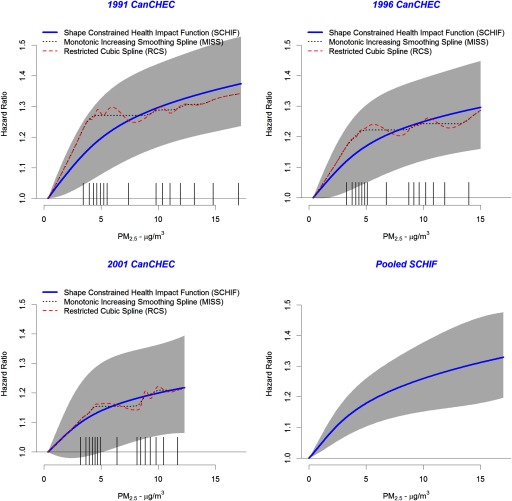Figure 2.
Shape Constrained Health Impact Function (SCHIF) (solid blue line), monotonically increasing smoothing spline (MISS) (dotted black line), and restricted cubic spline (RCS) (dashed red line) predictions by particulate matter with aerodynamic diameter () concentration and Canadian Census Health and Environment Cohort (CanCHEC) (1991, 1996, and 2001). Hazard ratio predictions based on pooling cohort-specific SCHIFs are also presented. Uncertainty bounds are displayed as gray shaded area. Tick marks on axis represent the 15-RCS knot locations.

